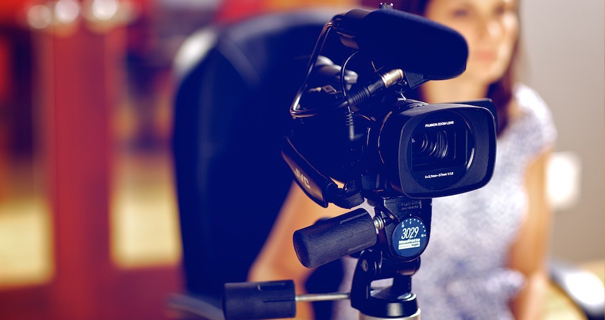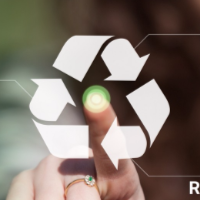The Role of Legal Videography in Safeguarding Legal Evidence
The Role of Legal Videography in Safeguarding Legal Evidence
Blog Article
Why Legal Videography Is Critical for Accurate Court Recordings
The duty of legal videography in courtroom setups can not be overemphasized, as it acts as a crucial device for maintaining the integrity of court documents. By catching both verbal and non-verbal interaction, it enhances the clarity of witness testimonies and shows the nuances of courtroom communications. This detailed paperwork not just aids in lowering potential misconceptions but likewise sustains appellate testimonials, thus enhancing the judicial procedure. The ramifications of incorporating lawful videography into standard court methods elevate vital concerns about its broader impact on the lawful system. What might these effects require?
Importance of Visual Evidence
In the world of lawful proceedings, the value of visual proof can not be overemphasized. Aesthetic evidence works as a powerful tool in developing truths, affirming testimonies, and improving the general clearness of an instance. This sort of evidence, which consists of photos, video clips, and diagrams, can provide a concrete context that spoken summaries commonly lack, thereby supplying courts and judges a more clear understanding of the scenarios surrounding a situation.
In addition, aesthetic proof aids in the retention of information. Human cognition is inherently visual, and people are most likely to bear in mind and understand information provided in an aesthetic format. In the court, this can be vital, as engaging visual evidence can persuade opinions and reinforce the narrative presented by lawful representatives.
Furthermore, using visual proof can lessen misconceptions and ambiguities that usually occur from spoken exchanges. By providing a straight depiction of occasions, visual proof aids to get rid of subjective interpretations and fosters a much more unbiased exam of the truths. The assimilation of visual evidence right into legal process not only enhances the honesty of the judicial procedure however additionally boosts the possibility of achieving a just end result.
Capturing Non-Verbal Signs
Making use of sophisticated videography techniques can substantially boost the capture of non-verbal cues throughout legal procedures. Non-verbal communication, consisting of face expressions, body language, and eye contact, plays a crucial duty in conveying emotions and intents that may not be explicitly specified in spoken statement. legal videography. Legal videography uses high-def video cameras and calculated angles to ensure that these subtle cues are recorded with quality and accuracy
The ability to assess non-verbal habits can supply beneficial context to statements made during court sessions. A witness's reluctance or confidence can be interpreted via their posture or motions, possibly affecting the jury's understanding of integrity. Moreover, making use of close-up shots can help concentrate on a speaker's expressions, permitting a more nuanced understanding of the statement.
Additionally, integrating several camera angles can develop a comprehensive view of interactions, highlighting characteristics in between events included. This multifaceted method not just enhances the precision of the court document but additionally aids in protecting the integrity of the judicial procedure - legal videography. Ultimately, capturing non-verbal cues through lawful videography promotes a richer, more complete depiction of court proceedings

Enhancing Statement Dependability
The reliability of testament can be significantly bolstered with using top notch lawful videography. Video clip recordings work as an objective tool that captures not just the talked words of witnesses however also the subtleties of their delivery, including tone, pacing, and emotional expressiveness. This multifaceted paperwork provides a clearer understanding of the witness's reputation and intents, which can be essential in legal procedures.
Furthermore, lawful videography minimizes the potential for misinterpretations that might emerge from created transcripts alone. When jurors can observe a witness's attitude and body movement in conjunction with their testimony, they are much better geared up to assess the authenticity and reliability of the evidence provided. This visual context can reinforce the testimonial story, making it a lot more compelling and trustworthy.
Furthermore, the presence of a video clip recording can discourage prospective incongruities in testimony. Witnesses may be much more careful in their statements when they recognize they are being recorded, bring about more exact and sincere accounts. On the whole, premium legal videography enhances the integrity of testimony, ensuring that the court has accessibility to a full and honest representation of the facts as shared by the witnesses.
Supporting Appeals and Reviews
Legal videography plays a vital duty in sustaining charms and reviews by supplying a thorough visual record of court procedures. This aesthetic documents records not just the spoken words of witnesses and attorneys but also the subtleties of body movement, tone of voice, and courtroom dynamics. Such components can be crucial in recognizing the context of testaments and disagreements presented.
In the appellate process, where the over at this website focus is on errors of legislation and step-by-step fairness, a video clip record can work as an important device for appellate courts. It makes it possible for judges to review the original test context, guaranteeing that choices are based upon a total understanding of the proceedings. The capability to visually analyze the behavior of witnesses or the communications in between celebrations can expose insights that created records may forget.

In addition, legal videography can aid in making clear ambiguities in statements or step-by-step rulings, therefore enhancing the basis for an allure. By providing a reliable, unbiased account of what transpired in court, lawful videography not only supports the honesty of the lawful procedure but likewise equips all parties included to make enlightened decisions regarding their instances.
Streamlining Court Processes
Enhancing courtroom efficiency, lawful videography streamlines procedures by providing immediate legal videography accessibility to aesthetic records of process. This modern technology permits judges, lawyers, and courts to review important testament and proof, making certain that all events have a clear understanding of the situation. By catching the nuances of verbal and non-verbal communication, videography improves the document, making it much easier to realize the context and weight of statements.

Additionally, video clip recordings can help with remote involvement in hearings, permitting higher versatility in scheduling and participation, which is specifically valuable these details in complex situations including multiple stakeholders.
Conclusion
Finally, lawful videography plays an essential role in making certain precise court recordings by supplying necessary aesthetic proof that records both verbal and non-verbal interaction. This practice enhances the dependability of testimonies, supports appellate testimonials, and enhances court room processes. By fostering a detailed understanding of court room characteristics, legal videography eventually contributes to more fair judicial results, reinforcing the integrity of the legal system and assisting in educated decision-making.
Report this page